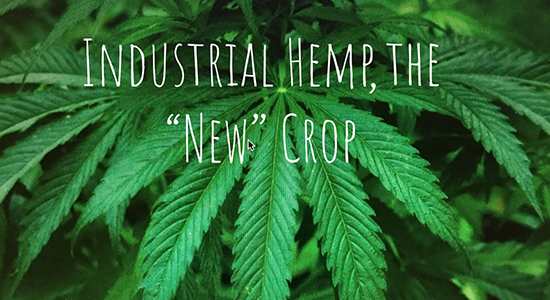
Hemp has been around forever – at one time, it was called “sacred grass.”
As our nation developed, families were mini-manufacturers of all types of fabric products, as President Thomas Jefferson noted in 1812:
… Every family in the country is a manufactory within itself and is very generally able to make within itself all the stouter and middling stuffs for its own clothing and household use. We consider a sheep for every person in the family sufficient to clothe it, in addition to the cotton, hemp and flax which we raise ourselves.
Hemp was neither good nor bad – it was a part of their lives, like cotton or flax.
Over the years, hemp has risen and fallen, and is now rising again. Hemp is now a million-dollar crop, and is used in many products like CBD oil, plastics, clothing, rope, food, and building materials. Hemp has the potential to improve our environment, our health and our economy.
Isn’t that Marijuana?
When my client said he was growing hemp, my first thought was “isn’t that marijuana?” But, knowing my client, I knew that was not correct.
Cannabis sativa is the parent plant. Hemp and marijuana both belong to the cannabis family, but are two different species. They do look alike, but they differ in the tetrahydrocannabinol (THC) chemical makeup – THC is the chemical that affects mental status. Generally, in marijuana the THC level is 15 percent or higher. In hemp, the THC level is 0.3 percent or less.
Why a ‘New’ Crop?
In 1937, producing hemp was all but halted by the Marihuana Tax Act. This act made farming hemp a not-for-profit business, although during World War II, farmers were encouraged to grow hemp to replace the supply cut off by the war.
In 1970, the Controlled Substances Act made the farming of hemp illegal, classifying hemp as an illegal drug. The 2014 Farm Act was the beginning of a change, allowing industrial hemp to be grown as part of an agricultural pilot program. The goal of the 2014 Farm Bill was research-related, therefore the law didn’t address issues related to growing or selling hemp products. The 2018 Farm Bill clarifies that the growing and selling of industrial hemp products are legal, as long as the THC level is 0.3 percent or less.
Despite the legislation, farmers are not able to grow industrial hemp as freely as wheat, corn, or other crops. All Wisconsin hemp farmers fall under the agricultural pilot program. For Wisconsin farmers, 2020 should be the last year of the program.
The 2019 Wisconsin Act 68 or the Growing Opportunities Act begins the process of moving away from the agricultural pilot program. Wisconsin will apply at the federal level to become the regulator of the hemp industry within the state. In order to achieve this transition from federal to local, each state is required to know the location of all hemp farms, have a set protocol in place for testing THC levels and a system for disposal of hemp plants that fail THC testing, as well as protocols and procedures in place for farmers who violate the federal and local regulations.
The Food and Drug Administration (FDA) is also involved, and continues its authority to regulate products with cannabidiol (CBD). However, the FDA claims they will not get involved unless the products claim to be therapeutic or they become a public threat.
Serving Clients Who Grow Hemp
Federal and state laws will continue to evolve, and compliance issues will remain a way of life for your clients. Currently there are 40 states that have hemp programs, but not one of the 40 have the same hemp regulations.
Stay ahead of your client’s needs as the laws and the landscape rapidly change. Get involved with hemp associations at the federal and local level. Educate your client, give them best practices for compliance at the federal and local level, and fight for your clients in times of seizure.
Clients, with you on their team, will have the confidence to move forward with their plans and maintain their focus on what they do best – grow hemp.
This article was originally published on the State Bar of Wisconsin’s Agriculture Law and Rural Practice Blog of the Solo/Small Firm & General Practice Section. Visit the State Bar sections or the Solo/Small Firm & General Practice Section web pages to learn more about the benefits of section membership.
